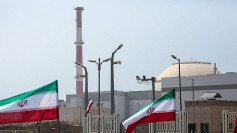Asia's economies will continue to be badly affected by the COVID-19 pandemic, the Asian Development Bank said Tuesday in an updated assessment of the regional and international effects of the outbreak
The downward effect on China's gross domestic product will be close to 5%, the ADB said.
"The loss to the rest of developing Asia will be between 1.0% and 2.2% of gross domestic product. The estimated impact could be an under-estimate as additional channels such as supply disruptions, interrupted remittances, possible social and financial crises and long-term effects on health care and education are excluded from the analysis," it said.
"The rapid spread of COVID-19 has made it the worst pandemic in a century. The outbreak was still concentrated primarily in the People's Republic of China when ADB released initial estimates of its economic impact March 6.
"Since then the outbreak has expanded significantly, with its epicenter shifting to Europe and the U.S. The use of containment measures such as travel bans and community quarantines has expanded greatly. And data from the PRC indicate that the outbreak caused a double-digit decline in economic activity in the first quarter of 2020.
"Updated scenarios suggest a much larger impact than previously envisioned, reflecting these new realities. The range of scenarios...suggest a global cost of between $2.0 and $4.1 trillion - equivalent to between 2.3% and 4.8% of global gross domestic product.
"The much higher estimate reflects its spread to Europe, the U.S. and other major economies. Developing Asia, including the PRC, accounts for just 22% to 36% of the total," Tuesday's ADB update said.
The ADB defines developing Asia as 45 countries in the Asia-Pacific. The report says its overall gross domestic product is expected to contract 0.7% this year. That is the region's first negative quarterly figure since 1962. The ADB's previous forecast in June had estimated 0.1% growth.
For 2021, the region is forecast to recover and grow 6.8% - still below pre-COVID-19 predictions, the ADB said.
The report's forecasts show the damage from the pandemic was greater than previously thought -- with about three-quarters of the region's economies forecast to slump this year.
"Most economies in the Asia and Pacific region can expect a difficult growth path for the rest of 2020," ADB chief economist Yasuyuki Sawada said in a statement.
"The economic threat posed by the COVID-19 pandemic remains potent, as extended first waves or recurring outbreaks could prompt further containment measures," Sawada said.
While the pandemic remains the biggest downside risk to the region's outlook, Sawada said in a separate media briefing "worsening geopolitical tensions" that include the trade and technology war between U.S. and China, could also dent growth.
China, where the coronavirus surfaced in December, is seen bucking the trend as the ADB kept its 2020 growth forecast at 1.8%. The world's second largest economy is expected to rebound strongly to 7.7% in 2021, the ADB said.
India's economy is expected to contract 9.0% this year, ADB said - a far worse outcome than the 4.0% contraction previously forecast, ADB said. But it also expected India to bounce back with 8.0% growth next year.
As the pandemic took a toll on Southeast Asian economies, the sub-region is projected to suffer a 3.8% decline this year before picking up next year.
Latest forecasts suggest a more protracted "L" shaped recovery for "developing Asia," Sawada said.
Depressed demand and lower oil prices allowed the ADB to keep its inflation forecast for developing Asia at 2.9%. That is predicted to slow further to 2.3% in 2021.






